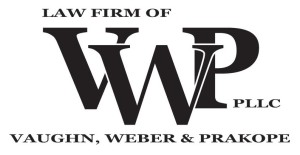News: New Fannie Mae Lending Guidelines
The Good
Buyers will be allowed to use gifts and grants from nonprofit groups for their minimum five percent down payment.
The Bad
Borrowers who have gone through foreclosure will be excluded from obtaining a Fannie-backed loan for seven years.
The following article is from the New York Times
New Lending Guidelines From Fannie Mae
By LYNNLEY BROWNING
NEW lending guidelines being rolled out by Fannie Mae will make securing a mortgage a lot easier for some borrowers but harder for others.
The rules, effective on Dec. 13, will allow buyers to use gifts and grants from nonprofit groups for their minimum 5 percent down payment, which is the threshold set by Fannie Mae, the government-owned company that sets lending standards and buys mortgages from lenders. (Freddie Mac is considering similar new guidelines, said Brad German, a spokesman.)
Previously, borrowers had to contribute a minimum 5 percent down payment from their own funds, but additional down payment money could be from a gift (though never from a home seller). The exception was for borrowers who put 20 percent down: all that money could come as a gift.
Because many lenders now require a down payment of 10 percent or more, the new rules mean that borrowers will still have to come up with extra funds — either their own or gifts.
Still, “this is definitely going to help upgrade buyers and young couples who for whatever reason don’t have enough money and are getting some from their families,” said Edward Ades, the owner of Universal Mortgage, a broker in Brooklyn.
The gift rules apply only to single-family principal residences, including town houses, co-ops and condominiums, and covers mortgage amounts in excess of 80 percent of the property’s value. Also, there is a limit on the loan balance — $729,000 in high-cost areas like New York City, and $417,000 in other areas.
Now, the not-so-good news.
Fannie Mae is getting tougher on debt-to-income ratios, or the amount of a borrower’s gross monthly income that goes toward paying off all debts. The maximum ratio for those seeking a conventional mortgage will drop to 45 percent from 55 percent under the new guidelines.
The agency is also taking a harder look at payment histories on revolving debt. In the past, if a borrower missed a monthly payment, Fannie Mae ignored it, or required that lenders add a few percentage points to the total balance when calculating the debt-to-income ratio. Now, buyers who have missed a payment will have 5 percent of the total balance added to their ratios.
Mr. Ades said that new hurdle could sink many potential borrowers with student-loan debt that has been deferred.
Susan A. Kreyer, the president of the New York Association of Mortgage Brokers, added that buyers who had bought big-ticket items through financing with delayed payments would also be affected.
In addition, Fannie Mae is scrutinizing people who are at the end of their mortgages, with 10 or fewer payments left. It will now count those remaining balances in the debt-to-income ratios — another departure. Mortgage experts say that older buyers near the end of their loans may now have a tougher time securing a loan for a second home.
But perhaps the toughest news from Fannie Mae concerns borrowers who have gone through foreclosure. They will be excluded from obtaining a Fannie-backed loan for seven years, up from four. “That’s a long time in this economy,” Ms. Kreyer said. That change was announced separately from the gift and debt rules, but will also take effect in Fannie Mae’s automated underwriting systems next month.
Fannie Mae buys or guarantees around $3.2 trillion in residential loans, about 28 percent of the entire residential mortgage market in the United States. Lenders typically issue loans based on the agency’s guidelines.
Buyers who do not meet the new Fannie Mae requirements may have to consider a nonconforming loan from the Federal Housing Administration. These loans, which do not follow Fannie Mae underwriting guidelines, require mortgage insurance premiums and, for those with low credit scores, higher interest rates and steeper down-payment requirements.
News: Fannie Mae Offers Foreclosure Options
| Fannie Mae recently launched KnowYourOptions.com
In its Press Release, Fannie Mae states that:
The Key features of KnowYourOptions.com are said to include:
|
||||||



Keep in Touch